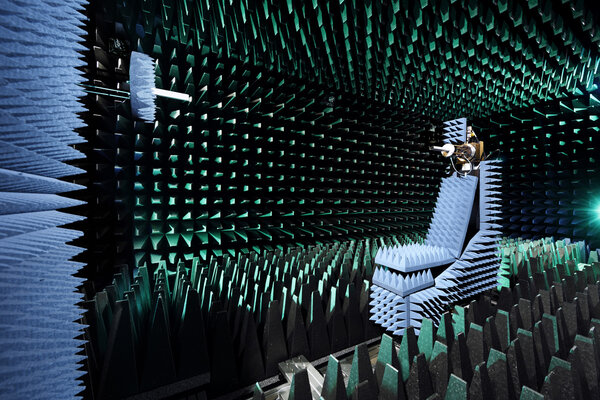New ‘wireless’ lab aims at wifi 1000 times faster by 2020

The number of wireless connected devices will grow explosively over the coming years due, in no small measure, to the ‘Internet of Things’. Homes alone will have many tens of these devices and sensors. But to enable them all to communicate at the same time, fast and error-free, new technology is needed. So TU/e has built a new laboratory complex, CWTe Labs, that will be officially opened on Monday 31 August.
CWTe stands for the <link universiteit faculteiten electrical-engineering onderzoek technologisch-centrum centre-for-wireless-technology _blank>Center for Wireless Technology Eindhoven, which clusters TU/e knowledge on wireless technology. The new labs of CWTe, around 700 square meters, covers virtually the entire eighth floor of the university’s Flux building. “We have here the most comprehensive wireless-lab in the whole of Europe,” CWTe director and professor Peter Baltus says. “With all the labs and disciplines you need to study wireless systems as a whole, all in one place. And that’s quite unique.”
One of the very special features of the laboratories is that they are electromagnetically sealed off from the outside world to prevent, for example, interference from telephone traffic. “We have more or less sealed the entire lab,” Baltus explains. But the special windows, which are able to keep out electromagnetic fields, allow sufficient daylight in. Furthermore, the temperature is very stable and there is virtually no static electricity. All of which means that the measurements are precise and reliable.
The CWTe is working on a number of major research programs, one of which aims to achieve a wifi speed of 1 Tb (1 terabit, or 1000 Gb) per second by 2020, or a thousand times faster than current wifi speeds. By 2020 it should run in the laboratory, and within five years later it should be available in the shops. Baltus stresses the need for this given the increasing numbers of wireless devices on the network, all of which have to be quickly connected without causing any interference with each other. “Faster, cheaper and more efficient – that’s we are constantly striving for,” says the CWTe director.
Apart from more devices, there are also newcomers appearing on the network: wireless sensors. These are miniscule, cheap sensors that require little to no power. They get their energy from the wireless network’s radio waves. The development of these kinds of sensors is the second major CWTe research program. Like miniscule temperature sensors that measure the temperature in every room without the use of a single wire.
The third major focus of CWTe is the development of terahertz technology. Terahertz stands for 1000 billion vibrations per second. Using this highly promising electromagnetic frequency range, the researchers want to develop small, cheap technology for applications like crystal clear medical imaging and weapon detection.
CWTe labs are for use not only by TU/e; companies can also use them. Baltus: “We hope that more companies will join us in research.”